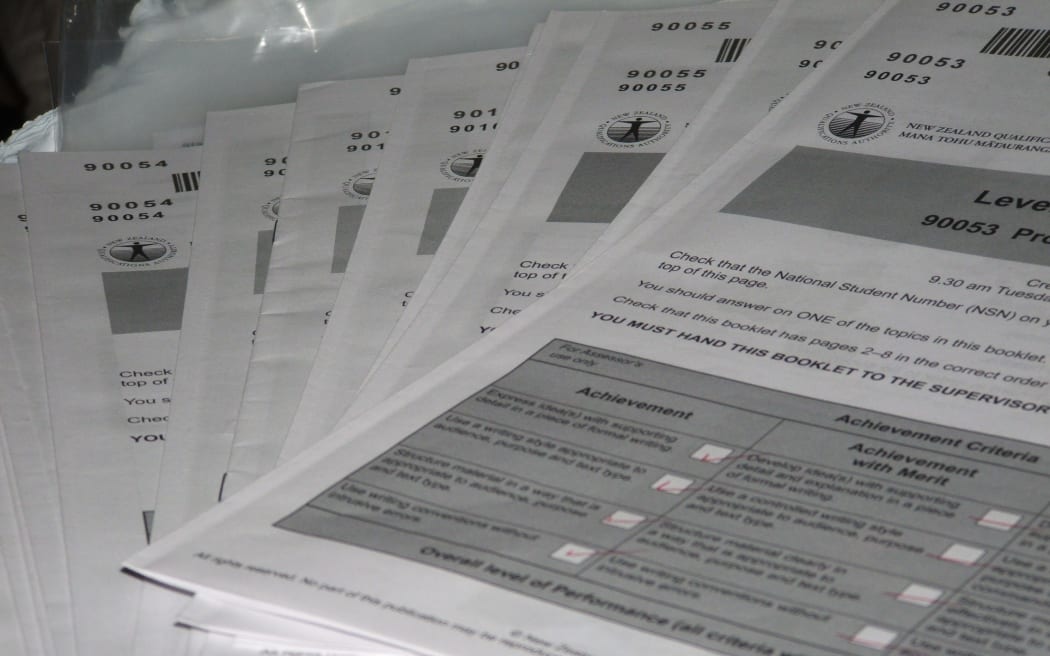
Secondary school principals are calling for a rethink after thousands of teenagers failed new NCEA literacy and numeracy tests Photo: 123RF
Secondary school principals are calling for a rethink after thousands of teenagers failed new NCEA literacy and numeracy tests with Māori and Pacific students hardest hit.
Figures from the most recent round of testing in May showed maths was the biggest stumbling block - of the 55,468 who sat the test 30,196 or 54 percent failed.
Half of those who failed maths were Māori or Pacific with failure rates of 77 percent for Pacific students and 71 percent for Māori.
In reading 54 percent of Māori students and 63 percent of Pacific failed, and in writing 55 and 56 percent failed.
Students must pass all three online tests before they are allowed to receive any NCEA qualifications though this year and next year students could use alternative NCEA standards to meet the requirement.
Secondary Principals' Association president Vaughan Couillault said it was time for a rethink.
"I'd say that in general we're concerned about the co-requisites and the fact that it may be creating a larger problem than the one we were trying to solve regarding functional literacy and numeracy," he said.
"It's not helping with the equity gap at all, in fact it's exacerbating it. On the surface of it, you'd say that the literacy and numeracy co-requisites are not helping in terms of students being able to access the qualification."

Photo: Supplied
Couillault said some students might be failing because they did not perform well in online exams, rather than because their literacy or numeracy was poor.
The tests had been introduced at the same time as changes to NCEA level 1 standards which schools were finding more difficult to work with than expected, he said.
Students could meet the literacy and numeracy requirement through specific NCEA standards instead of the tests, but that pathway was only available this year and next, and it was a lot of work, Couillault said.
Some schools asked all their Year 10 students to sit the tests this year, but they might change that approach in future and ensure students did not attempt the exams until teachers judged they were ready, he said.
Teachers questioning if tests fit for purpose - Tinning
Association of Teachers of English president Pip Tinning said the results for Māori and Pacific students were "absolutely horrific".
"It's really concerning that there has been little shift in terms of equitable outcomes for those groups," she said.
Teachers needed more detail from the Qualifications Authority about what students were doing wrong, Tinning said.
Teachers did not want to "teach to the test" but there might be techniques that students could use to improve their results, she said.
Teachers were asking if the tests were fit for purpose and if students had enough support to prepare for the tests, she said.
English teacher Katrina Dyne was completing a PhD on secondary school literacy coordinators - the people who ensured students were ready to sit the reading and writing tests.
She said the results were concerning and put schools under pressure to use their resources to get students up to speed.
"It's not just about passing those tests, it's actually about them having foundational literacy, that's the kind of literacy that these co-requisites are testing, that they have the foundational literacy skills so that they can go out into the world, get jobs, engage with their communities - they're really important," she said.
Dyne said pass rates were a national average so some schools would have worse results and greater challenges in lifting student literacy.
"Some schools will need more resourcing and a lot more support than maybe some others might need," she said.
Students could sit the tests multiple times, but Dyne said the figures indicated students had low pass rates on subsequent attempts.
"For some students, and I totally understand why, if you have had one attempt, two attempts, or more and you haven't been successful at passing these co-requisites I'm not sure how much more motivated you would be to carry on if you've already failed several times," she said.
Dyne said literacy coordinators had been worried about how the tests would affect students and had been working hard to identify those who might not pass the tests.
"Then they're working to lift the literacy levels of these students to get them ready for these tests and then there's another element for these co-reqs in that they have to prepare students to sit the tests as well, so all of the admin, schooling them up in how to log in, how to use the platforms," she said.
More than 55,000 students sat the online tests in May and the highest pass rates were among Year 10 students, most of whom were sitting the tests for the first time, and European students.
Students in other year levels also sat the tests and many of those in Y11-13 would have attempted the tests last year. RNZ previously reported that most students attempting the tests for a second time, failed.
The Qualifications Authority said pass rates by ethnicity for reading were European 68 percent, Asian 56 percent, Māori 46 percent, and Pacific 37 percent.
In writing the pass rates were European 62 percent, Asian 53 percent, Māori 45 percent, and Pacific 44 percent.
In numeracy, European 53 percent, Asian 52 percent, Māori 29 percent, and Pacific 23 percent.
Year 10 pass rates ranged from 67 percent in reading to 57 percent in numeracy.
Year 9 students had better pass rates across all three subjects than those in Y11-13, where pass rates were below 50 percent and in some cases close to 30 percent.
The Qualifications Authority website showed the next round of tests was scheduled for September.






